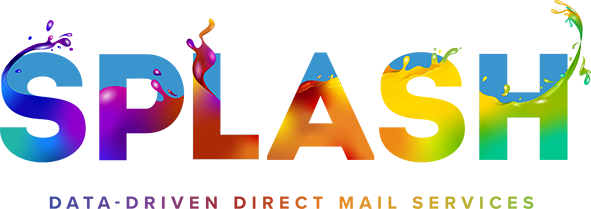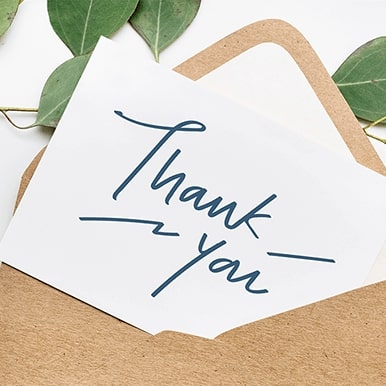
- Categories:
- Direct Mail Guides,
- Nonprofit Direct Mail,
Donor recognition and appreciation is a crucial practice for nonprofits to acknowledge contributions, fostering stronger connections and donor retention rates. The process of recognizing and appreciating donors is an art, and at FSSI Splash, we’ve perfected it. In this article, we dive into how nonprofits can utilize donation data to implement donor recognition ideas, effectively strengthening relationships, inspiring continued support, and attracting new supporters through word-of-mouth referrals and increased transparency about the impact of donations.
How Donor Recognition Can Help Donor Retention
One key aspect of donor retention is the implementation of donor recognition programs. These programs aim to acknowledge and celebrate donors for their generosity and commitment to the cause. Utilizing nonprofit direct mail campaigns, organizations can deliver personalized messages of gratitude directly to donors’ mailboxes, creating a tangible connection and reinforcing their impact. Additionally, by incorporating donor recognition events or ceremonies, nonprofits can publicly recognize major donors, demonstrating their value to the organization and inspiring others to contribute.
Nonprofit fundraising mailers serve as powerful tools for showcasing the impact of donors’ contributions, sharing success stories, and highlighting the organization’s achievements. Through targeted nonprofit mail campaigns and donor stewardship strategies, nonprofits can ensure that donors feel valued and appreciated, thus increasing the likelihood of continued support and engagement.
To enhance donor retention efforts, nonprofits must also prioritize effective donor communication and engagement. Personalized nonprofit mail can go a long way in making donors feel recognized and appreciated for their individual contributions. By leveraging nonprofit direct mail automation tools and analytics, organizations can segment donors based on their interests and giving history, allowing for more tailored and relevant communication.
Strategies to Increase Donor Retention
Acknowledging donors promptly and personally upon receiving their gift is essential to showing appreciation and maintaining strong relationships with supporters. But how can nonprofits make each preciation and maintaining strong relationships with supporters. But how can nonprofits make each “thank you” feel personal and meaningful? The trick is getting detailed with donation data and segmentation.
Nonprofits who employed segmentation and personalization strategies saw a 760% increase in revenue. (Campaign Monitor)
Recognition should be tailored to different donor tiers, including major donors and legacy donors, with personalized acknowledgments based on the donation amount or type. To segment your donor list into categories based on actions and how they donated, you can follow these strategies:
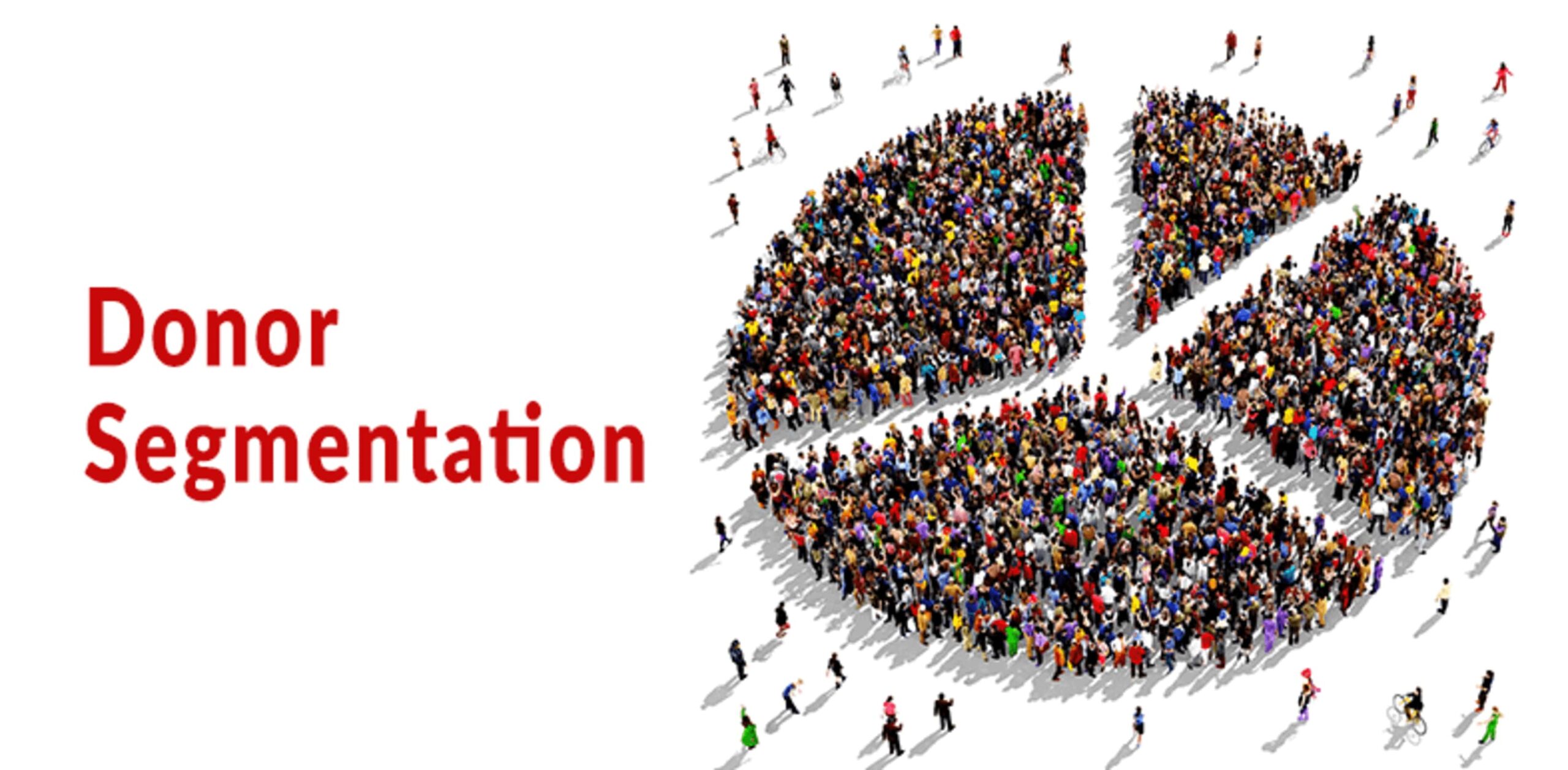
- Segment Donors Based on Actions: Sort donors by the amount of their contributions, zip codes, ages, or the ways they give (online, peer to peer, email, mail, etc.).
- Personalize Communication Channels: Tailor communications to donor preferences by considering communication channels like direct mail, phone calls, email, eCards, text messages, and social media based on donor preferences and engagement levels.
- Reference Past Giving History: Reference donors’ past giving history to personalize messages and acknowledge their previous contributions.
- Follow-Up After Specific Activities: Send follow-up messages after specific activities like volunteering or attending events to show appreciation and engage donors further.
- Implement Donor Segmentation: Segment donors based on characteristics such as age, location, previous donation amounts, nonprofit involvement, and communication frequency preferences to create targeted communications for each group.
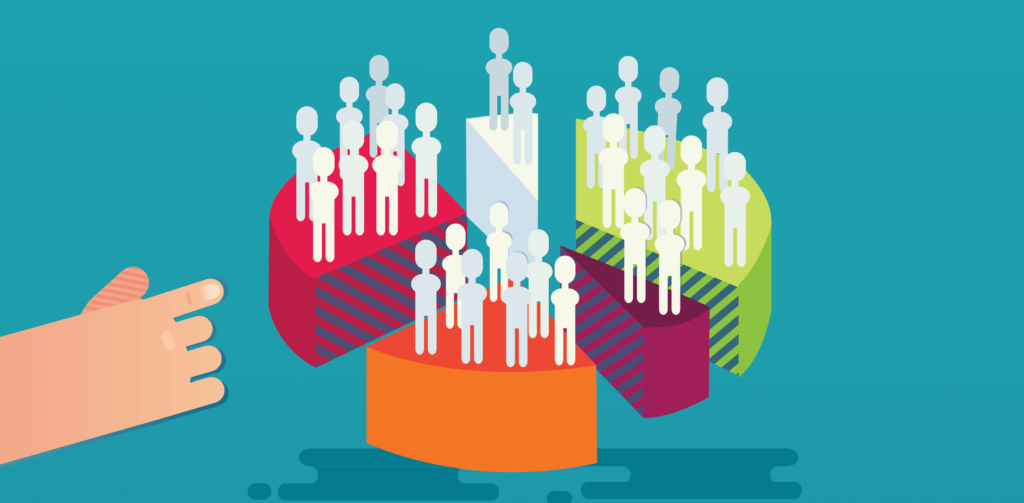
Donor Recognition Best Practices
Donor recognition is not just a formality; it’s an expression of gratitude that deepens relationships. Here are some best practices for acknowledging and appreciating donors effectively:
- Personalized Thank-You Letters: Each thank-you letter should be personalized, addressing the donor by name and expressing genuine appreciation. Detail how their contribution will make a difference and include a signature from a prominent figure within your institution.
- Impact Reports and Visuals: Provide donors with impact reports and visuals that showcase the tangible outcomes of their contributions. Highlight the specific projects or initiatives their support has enabled, and include photos, testimonials, and success stories.
- Exclusive Donor Events: Host exclusive events for legacy and major donors to express gratitude in person. These events can include tours of the campus, meetings with scholarship recipients, and discussions with faculty. It’s a way to make generous donors feel like valued insiders.
- Donor Recognition Societies: Establish donor recognition societies with different levels of membership. These societies can include special benefits, such as invitations to exclusive events and insider updates, depending on the level of support.
- Thoughtful Gestures: Surprise your donors with thoughtful gestures, such as handwritten notes, holiday greetings, or small tokens of appreciation. These gestures go a long way in making donors feel cherished and encourage further support.
- “Thank You” Videos: Develop videos showcasing the impact of donations on the nonprofit’s mission and share them with donors to provide a visual representation of their support.
- Donor Mentions on Social Media: Acknowledge donors publicly on social media platforms to showcase their contributions and inspire others to support the cause.
- Donor Recognition Walls and Plaques: Consider creating donor recognition walls or plaques to permanently acknowledge donors’ contributions in a meaningful way, especially for major donors.
- Branded Merchandise: Send out branded merchandise like pens, t-shirts, mugs, or other customized items featuring the organization’s name and logo as tokens of appreciation for smaller-tier donations.
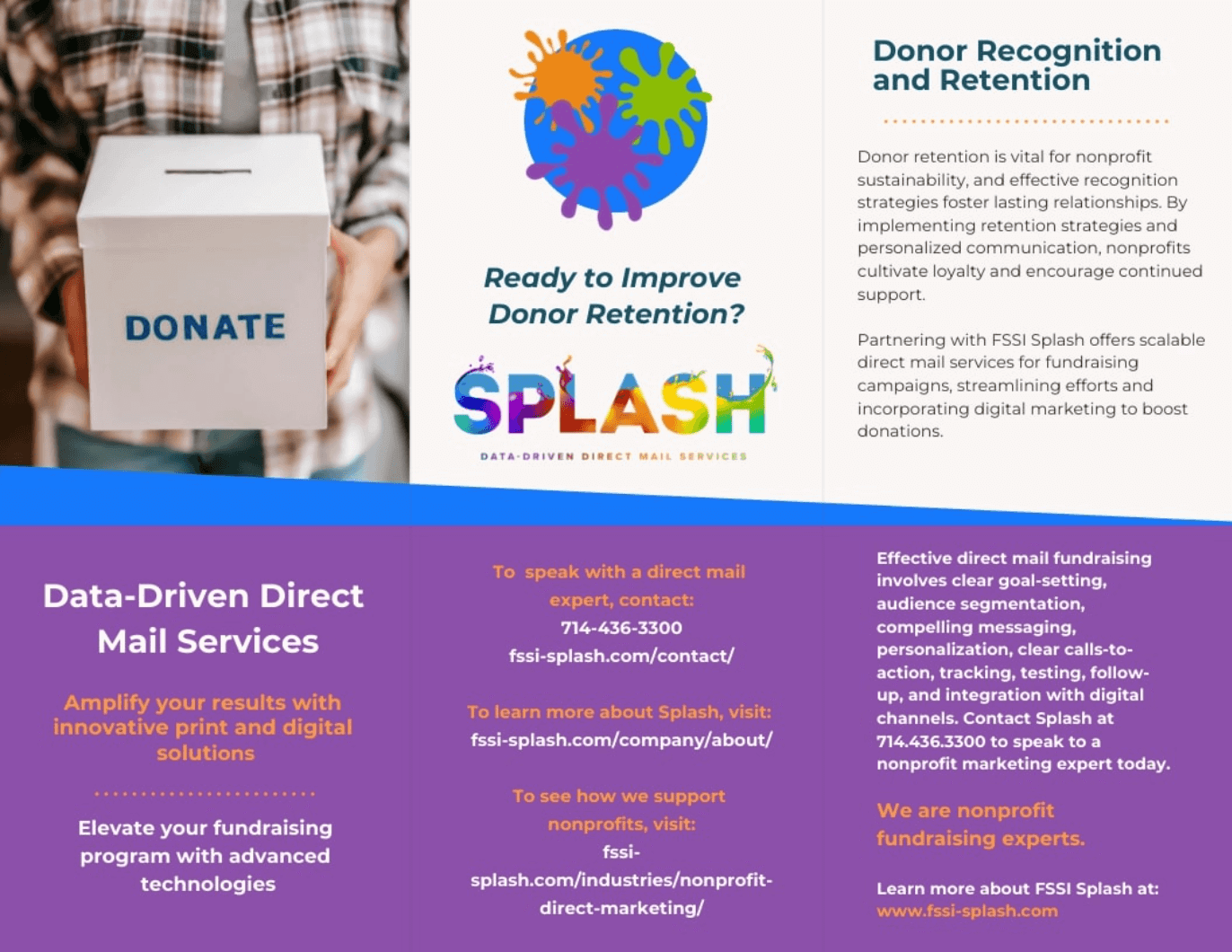
Powerful Marketing Automation

Do you have recurring, high-volume nonprofit direct mail fundraising campaigns for various stages of engagement, outreach, and retention? Enhance your operational efficiency with a platform that integrates custom print and digital solutions, utilizing templates to reduce duplication and streamline your direct mail processes.

Results-Driven Integrated Marketing
What if you could increase the effectiveness of your nonprofit direct marketing campaigns by 23 – 46%? Seamlessly target your donors with awareness and brand-building campaigns, delivering your message on all popular digital channels.
See How FSSI Splash Can Help Improve Donor Retention
Partnering with FSSI Splash offers scalable direct mail services for fundraising campaigns, streamlining efforts and incorporating digital marketing to boost donations. Outsourcing to experienced vendors enhances reach and effectiveness through automation, simplifying the recognition process and enabling efficient campaign management. Effective direct mail fundraising involves clear goal-setting, audience segmentation, compelling messaging, personalization, clear calls-to-action, tracking, testing, follow-up, and integration with digital channels. Contact Splash at 714.436.3300 to speak to a nonprofit marketing expert today.
Donor retention is vital for nonprofit sustainability, and effective recognition strategies foster lasting relationships. By implementing retention strategies and personalized communication, nonprofits cultivate loyalty and encourage continued support.
Sources:
https://printedimage.com/nonprofit-direct-mail-fundraising/
https://www.postalytics.com/blog/nonprofit-direct-mail-marketing/
https://www.compu-mail.com/blog/the-future-of-direct-marketing-nonprofit-fundraising-tips/
